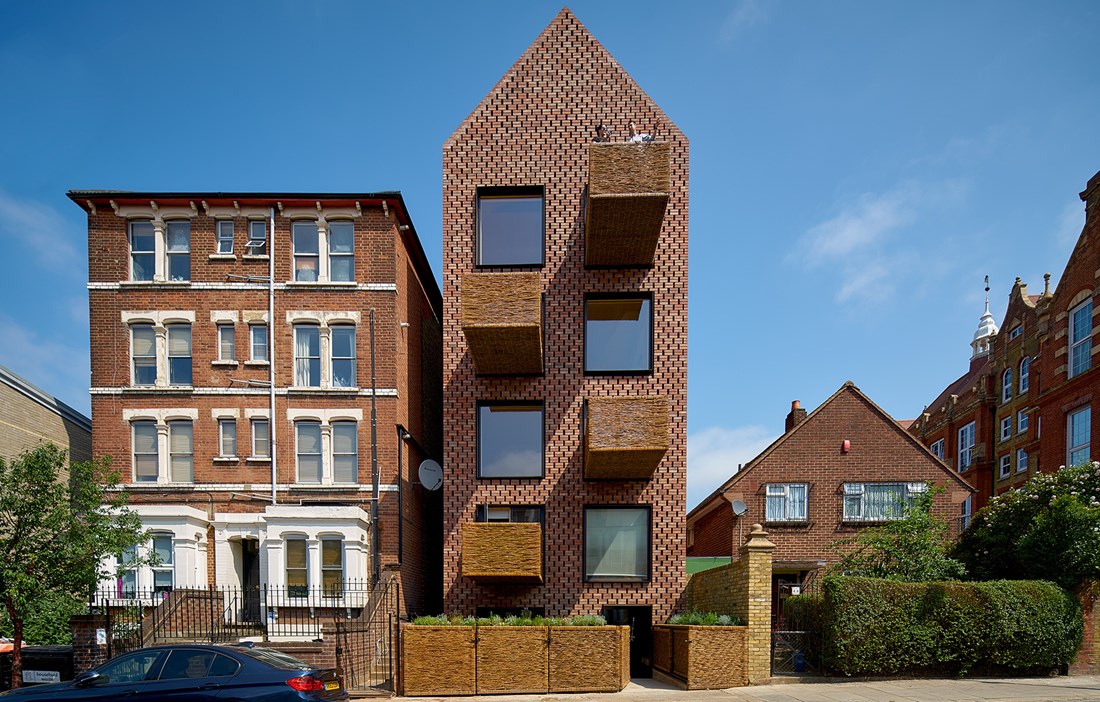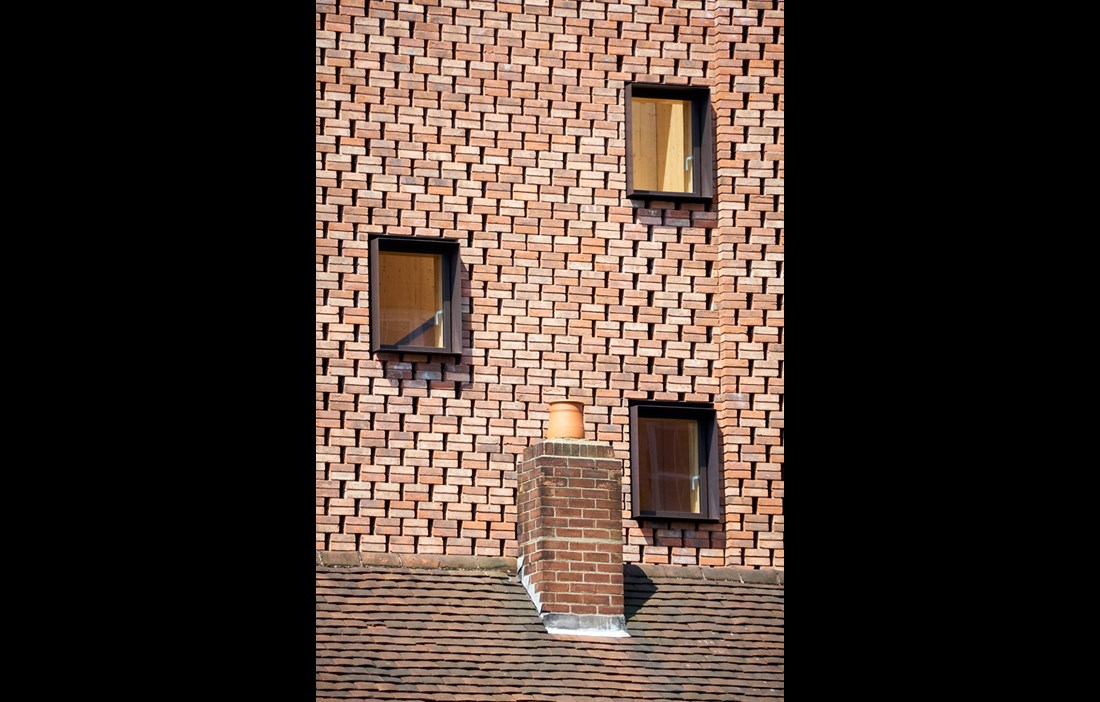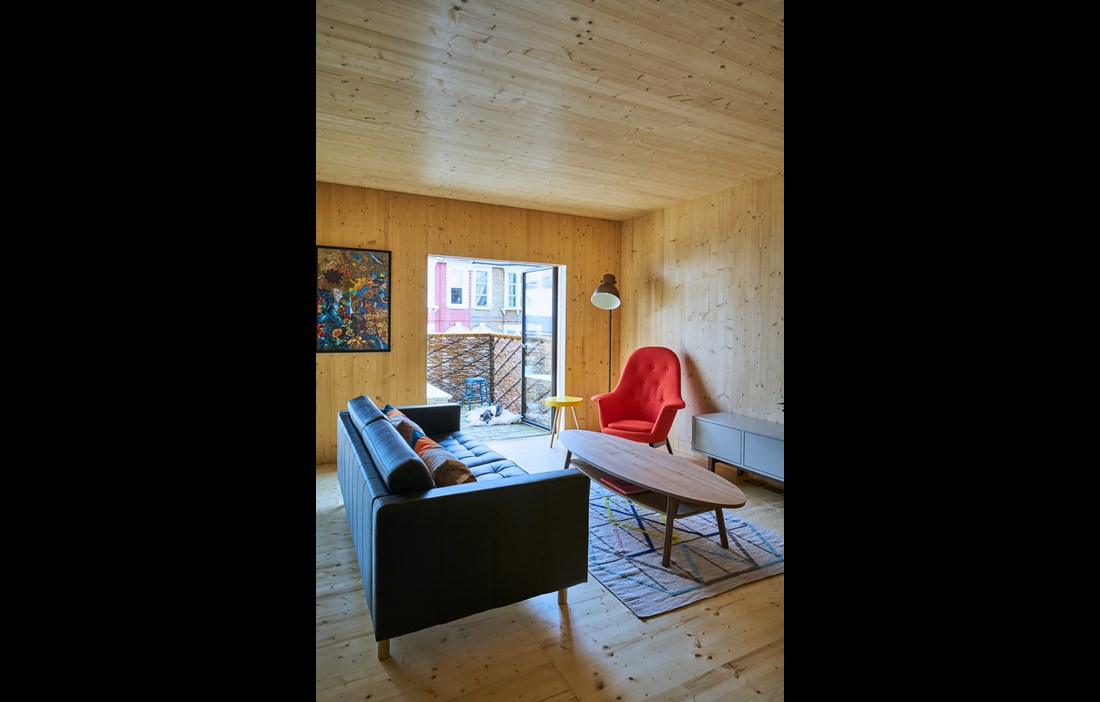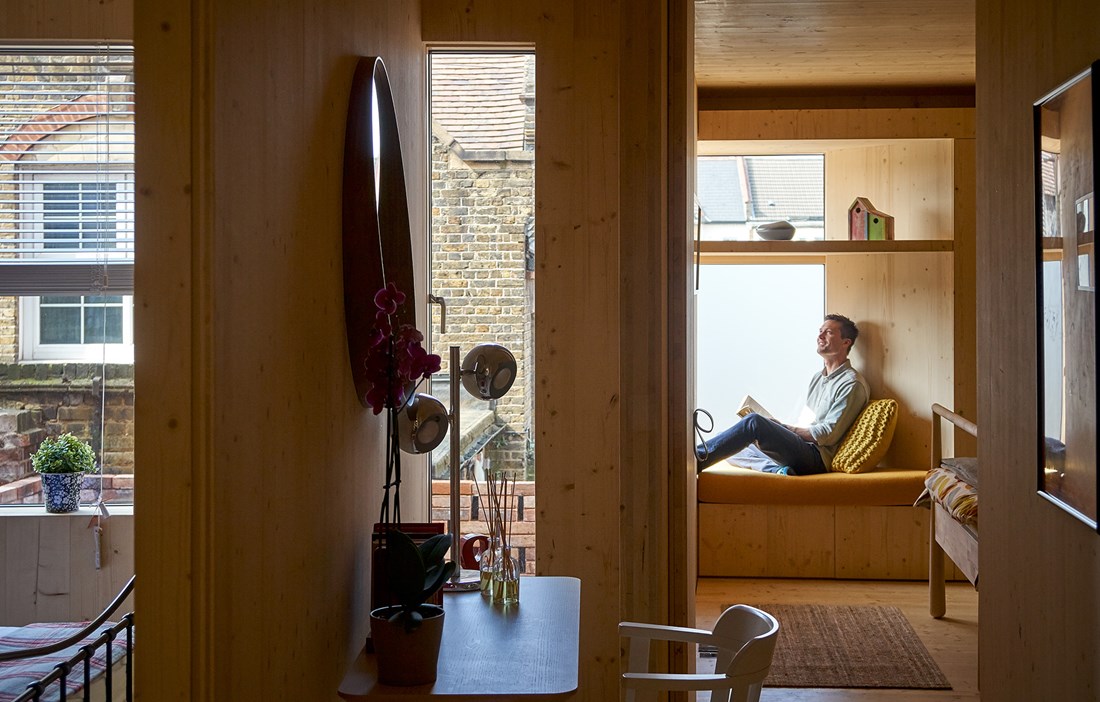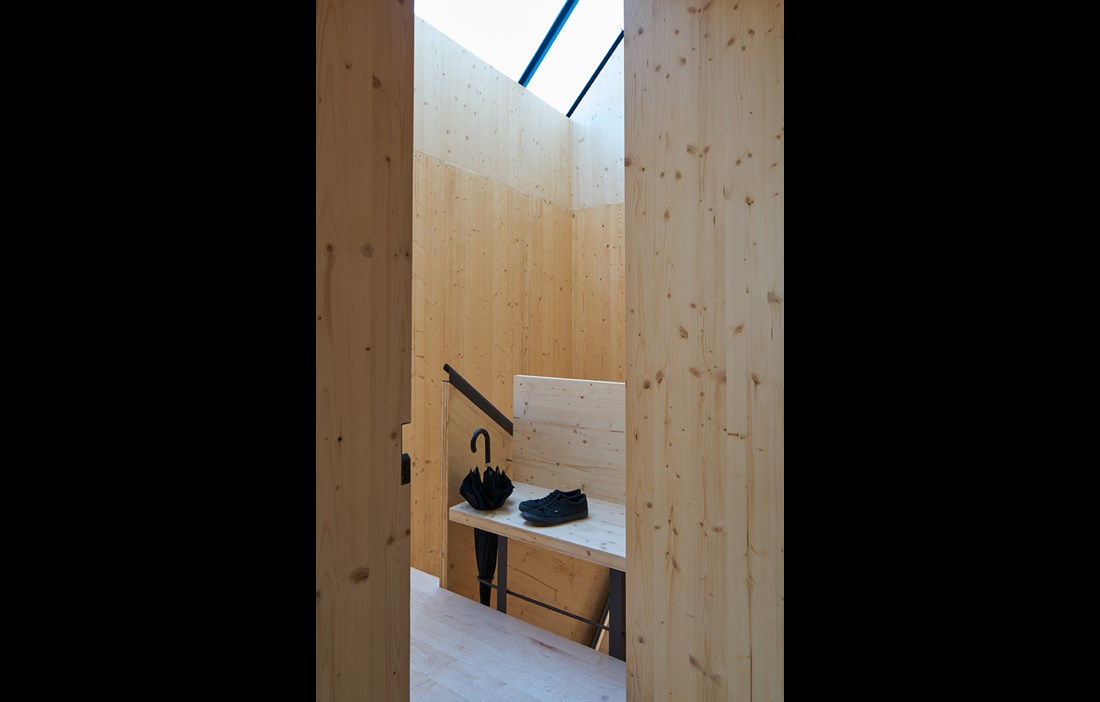A modern apartment block with a crosslam frame has edged its way in among the Victorian terraces of Barret’s Grove in north London. It is certainly a good environmental choice. But the benefits of choosing a wooden structural frame go even further, according to Dale Elliott, architect at Amin Taha Architects, which designed the building.
Stoke Newington, or Stokey as the area is often called, has undergone the same transformation as many other parts of the 32 boroughs in London in recent years. What were once rough inner city environments are now chic urban districts whose boutiques, restaurants and streetlife attract a young and aware public. The fact that Stokey has no underground station has helped to keep the tourists at bay, and the area has managed to retain its authentic, charming and in many ways bohemian atmosphere.
Barret’s Grove has a terrace of 20 typical Victorian houses lining one side of the street. On the other side, the buildings are more mixed and on a narrow plot a newcomer has insinuated itself between an Edwardian apartment block and a smart secondary school in a similar style. The slender, vertical look of the new six-storey block designed by Amin Taha Architects is accentuated by the contrast with the lower terraces opposite. The buildings seem to flirt with each other, and it is noticeable that the architect has embraced the classic Victorian approach to achieve some form of design symmetry with the street’s existing housing stock.
The new apartment block’s brick façade feels like a good fit with its surroundings. In fact, choosing anything else would have broken too much with tradition, not least because many of the existing buildings are listed, which creates particular rules concerning the materials used for newbuilds. On closer inspection, the holes in the open-bond brickwork reveal that the façade is just a shell, behind which sits a structural frame made from crosslam.
Internally, on the other hand, the wood is given a much more prominent role. Here, the wooden structure is entirely exposed, with full use of the material all the way from floor to ceiling, not only structurally but also from a visual and aesthetic perspective. The only places where red-brown façade bricks make their presence felt indoors are the bathrooms of the six apartments and the basement level.
Dale Elliott at Amin Taha Architects was the lead architect for Barret’s Grove and he quotes various reasons for choosing crosslam for the building’s frame.
“By using crosslam instead of concrete, we’ve managed to cut carbon emissions by 15 percent during the construction process. But it has been more than just an environmentally positive choice. Crosslam also has many technical benefits, not least in keeping construction times down. The fact is that it only took us ten days to get the structure of the walls and roof in place. Since we chose to expose the wood on the interior, we didn’t need to set time aside for dry-lining and painting, which saved a great deal of time and money.”
The project required a deep understanding of the various materials used, and their structural properties. Generally speaking, mass timber frames require less concrete and reinforcement in the foundation structure compared with equivalent concrete carcasses. The structure of the six-storey block on Barret’s Grove rests on a sunken cast concrete box whose inner walls are clad in brick. This concrete box houses one of the building’s six apartments, with two sunken courtyards providing daylight. The building carcass above ground is made from prefabricated crosslam sheets and panels supplied by the family-run Spanish company Egoin. The panels, which span up to 6 metres, have precise cutouts for stairs and various technical installations. The roof is also made from crosslam sheets that are carefully balanced against each other, so that the top mezzanine level can have glazing along the ridge.
The exterior brickwork façade is detached from the rest of the building and very much has a life of its own. This solution allows the crosslam frame to move freely, expanding and shrinking as the seasons and the weather change. A layer of insulation lined with a breather membrane covers the wooden frame, protecting it from any moisture and damp that might penetrate the perforated brickwork. It is clear that the wooden frame and the brick façade have very different purposes and designs, but together they form a seamless unit that reflects the building’s architectural vision.
“The block has a traditional brick façade with a unique brick pattern that we created ourselves and have named ‘Half Flemish Bond’,” explains Dale Elliott.
The stairwell is also made from crosslam, with some of the wall components measuring a substantial 11 x 2.4 metres. The stairs themselves make use of a three-layer spruce panel from the company Dold. Maple was chosen as the top wear layer for the building on Barret’s Grove, since it is such a hard and durable wood. Wooden panels from Dold were also used for the kitchen fittings, which were built on site, and the wardrobes and interior doors in the apartments.
Apartment blocks in wood have previously found it difficult to meet tighter sound insulation requirements, but with the sheets of solid crosslam there are now design solutions that meet the acoustic requirements, even for thinner dimensions. Crosslam also offers high fire resistance and load-bearing capacity in a fire.
“To achieve maximum fire safety, we chose to treat all the internal wood surfaces with a transparent fireproofing paint from Envirograf. We also improved the acoustic performance using extra insulation, acoustic panels and a floating wooden floor between apartments,” says Dale Elliott.
The four balconies overlooking the street are a fine detail, serving as extra decoration and softening up the otherwise quite stringent design language of the façade. The balconies are reminiscent of hot air balloon baskets, and they are actually manufactured in a similar way. Long, brown willow canes are woven around a frame made from diagonal steel poles. The spacious balconies create a natural link between inside and out, and their positioning also promotes social interaction between the apartments.
Read more on Amin Taha Architects
Text Katarina Brandt

